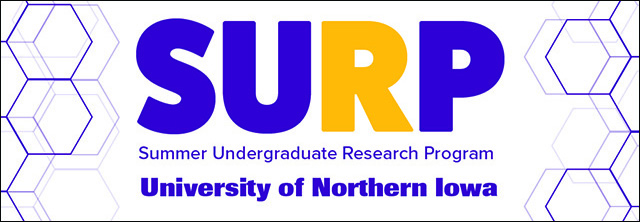
2023 Summer Undergraduate Research Program (SURP) Symposium
Location
ScholarSpace, Rod Library, University of Northern Iowa
Presentation Type
Open Access Poster Presentation
Document Type
poster
Keywords
Ruthenium compounds--Synthesis; Ruthenium compounds--Reactivity;
Abstract
Having two open coordination sites on the diruthenium complex makes for the ability to be able to be more precise when interacting with other compound. The side-on bonding of the bis(dihydrogen) gives it unique characteristics as well as unique capabilities. The Oganotransition Metal Chemistry book says that the dihydrogen is bonded by the donation of electrons from the H-H sigma bond as well as the back donation of electron density through the transition metal.3
In the past, many groups have studies on a mononuclear Ruthenium compound similar to the one we are synthesizing (see figure one). Our goal was to find out these characteristics and capabilities of the dihydrogen diruthenium.
Start Date
28-7-2023 11:00 AM
End Date
28-7-2023 1:30 PM
Event Host
Summer Undergraduate Research Program, University of Northern Iowa
Faculty Advisor
Robert Chin
Department
Department of Chemistry and Biochemistry
Copyright
©2023 Ryder J. Downey, Dr. Robert Chin
Creative Commons License

This work is licensed under a Creative Commons Attribution 4.0 International License.
File Format
application/pdf
Recommended Citation
Downey, Ryder J. and Chin, Robert, "Synthesis and Reactivity of Dihydrogen Diruthenium Complexes." (2023). Summer Undergraduate Research Program (SURP) Symposium. 3.
https://scholarworks.uni.edu/surp/2023/all/3
Synthesis and Reactivity of Dihydrogen Diruthenium Complexes.
ScholarSpace, Rod Library, University of Northern Iowa
Having two open coordination sites on the diruthenium complex makes for the ability to be able to be more precise when interacting with other compound. The side-on bonding of the bis(dihydrogen) gives it unique characteristics as well as unique capabilities. The Oganotransition Metal Chemistry book says that the dihydrogen is bonded by the donation of electrons from the H-H sigma bond as well as the back donation of electron density through the transition metal.3
In the past, many groups have studies on a mononuclear Ruthenium compound similar to the one we are synthesizing (see figure one). Our goal was to find out these characteristics and capabilities of the dihydrogen diruthenium.


